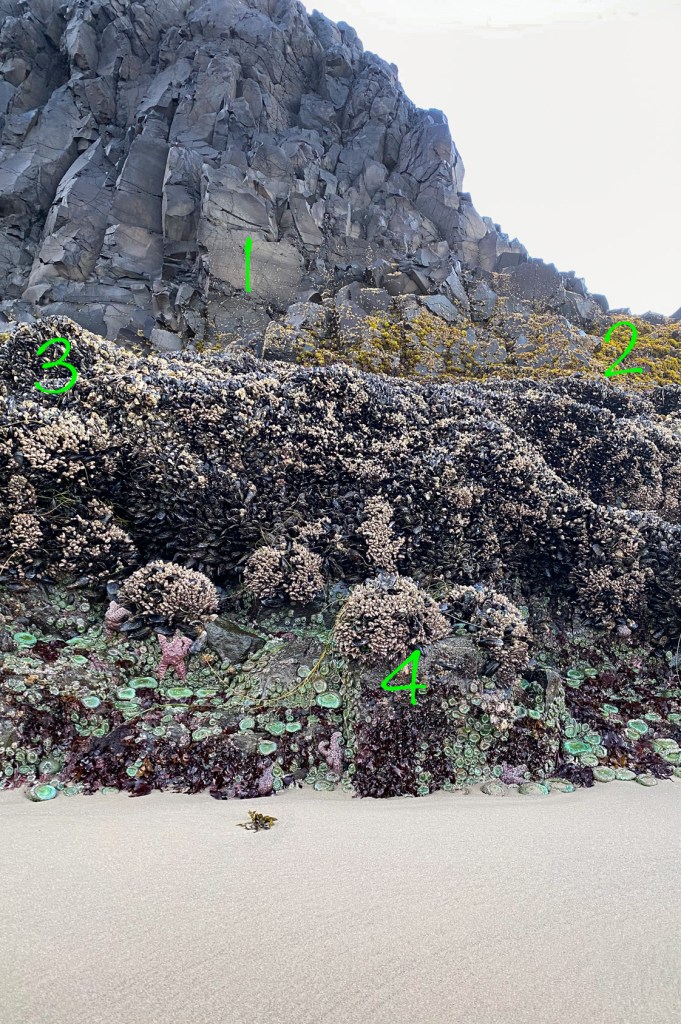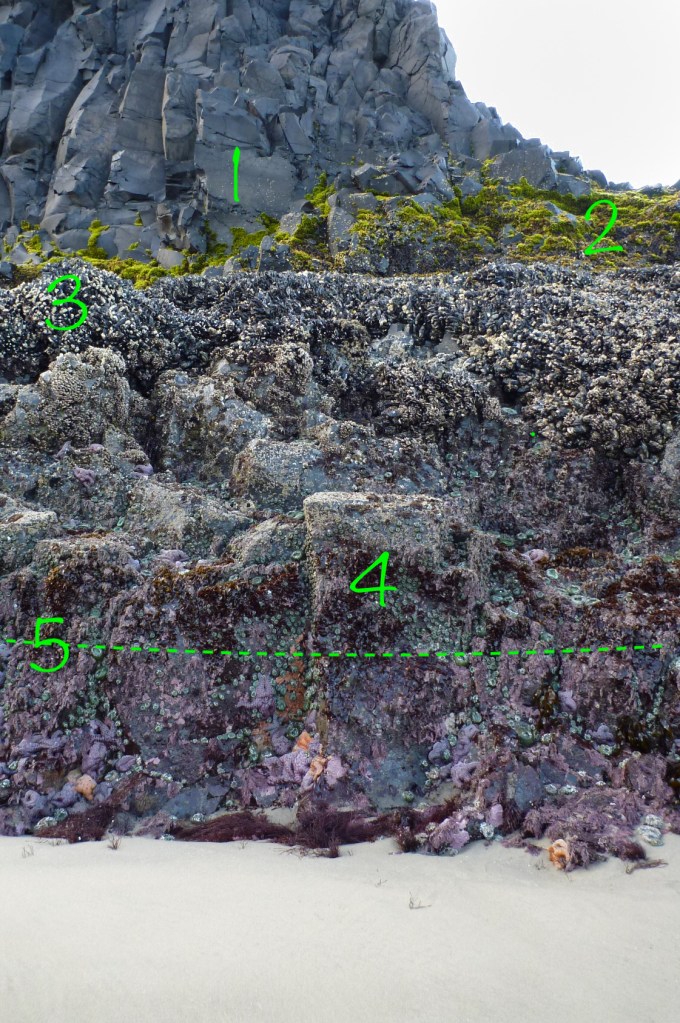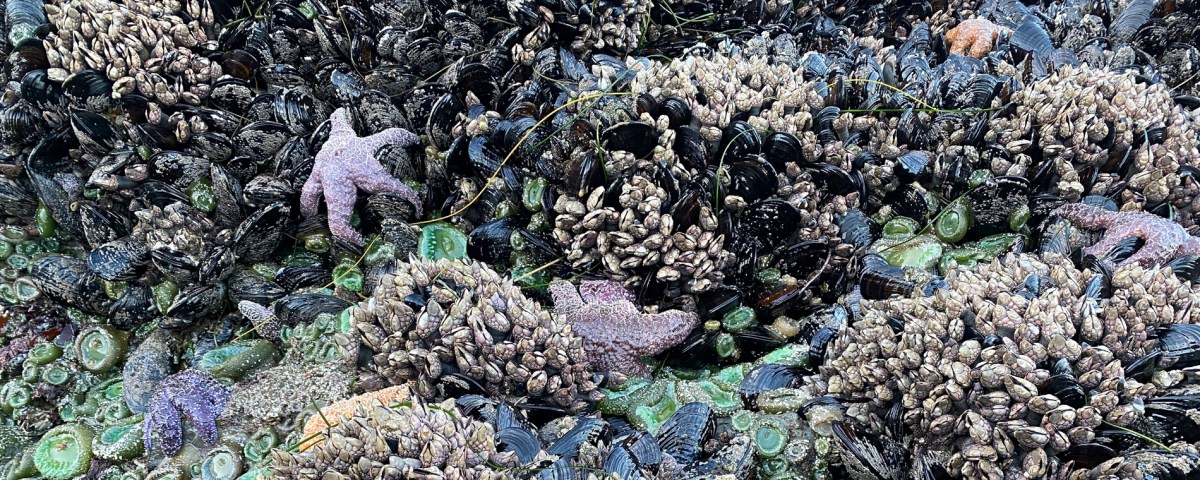It’s the setting, height, and shape that make the rock below an intertidal superstar. This surf zone heavy-hitter sits in an intertidal sweet spot where accessibility and rarely exposed lower reaches find the optimal balance. It’s a leviathan tall enough to support all the intertidal zones, and its steep broad faces impart visibility to the zones. Here, the panels show it in August 2020, the last time I saw it, and in April 2013. A lot’s gone on over that span. I’m looking for similarities and differences.


Numbers (annotated below) are included on each panel to help with orientation and context:
- A flat face in a zone of bare rock at or above the highest intertidal. It gets spray and the occasional splash.
- The xanthous band is Mazzaella parksii. It’s a red seaweed, and it’s not a constant; this yellow band has nearly disappeared and reappeared over time. Its right edge is in the same place in both panels.
- The mussel bed. It has a salt and pepper look- sometimes more salt, sometimes more pepper. The number 3 is placed on a high spot recognizable on both panels.
- A rectangular projection, singled out as an orientation aid. Below the number 4, you’re getting down into the low intertidal.
- The number 5 appears only in the right (2013) panel. It shows the 2020 sand level. Anything below it is buried beneath the sand in 2020.
In the years between now (2020) and then (2013), we’ve seen Pisaster, the large starfish and potent mussel predator visible in the lower portions of both panels, take a beating from Sea Star Wasting Syndrome and rebound. Over much of the time, they haven’t been a significant presence. One prediction from ecologists is that mussels will multiply in the absence of Pisaster, and the beds’ lower edge will move down. The side-by-side panels show more mussels now than in 2013, and the bed’s lower edge is lower now than it was seven years ago. The natural experiment’s result illustrated in the comparative photographs suggests the ecologists are right. In the end, though, the Pisaster effect on this small piece of shore is a bit confounded (e.g., the period also saw warm water blobs) and, thus, forever open to interpretation. My five-armed friends, the starfish, are easy with that, and why not? This isn’t the only tidepool mystery we’re sitting with.
In The Changeable Rocky Intertidal: 2013 v. 2018, you can view photos of this rock and another, comparing 2018 and 2013.


Well Steve, you’ve shown us before and after from a scientist’s perspective – something quite different and really interesting. Your side-by-side photos help those of us who are more visual in perspective exactly what’s going on. The mystery continues 😊. Well done!
I appreciate your observation, Steve. Thank you for the side-by-side photos and making effort to explain the changes. It is very interesting. A wonderful take on for the now and then.
Enlightening and pedagogical, Steve. Science is interesting and the changes could not be more explicitly presented. Thank you.
Fascinating and informative analysis. Thank you.
Took me awhile to get here, but I’m glad I didn’t miss this interesting and informative post. Thanks, Steve!
Fascinating. The intertidal zone is something I want to explore. I’ve lived in a city by the sea for most of my life, but that zone is either sharp rocks or crowded beaches. You wouldn’t slowly get to recognize the beauty of the zone by just walking in places like these. You really have to pull up your trousers and wade in. I hope I get to start within the year.